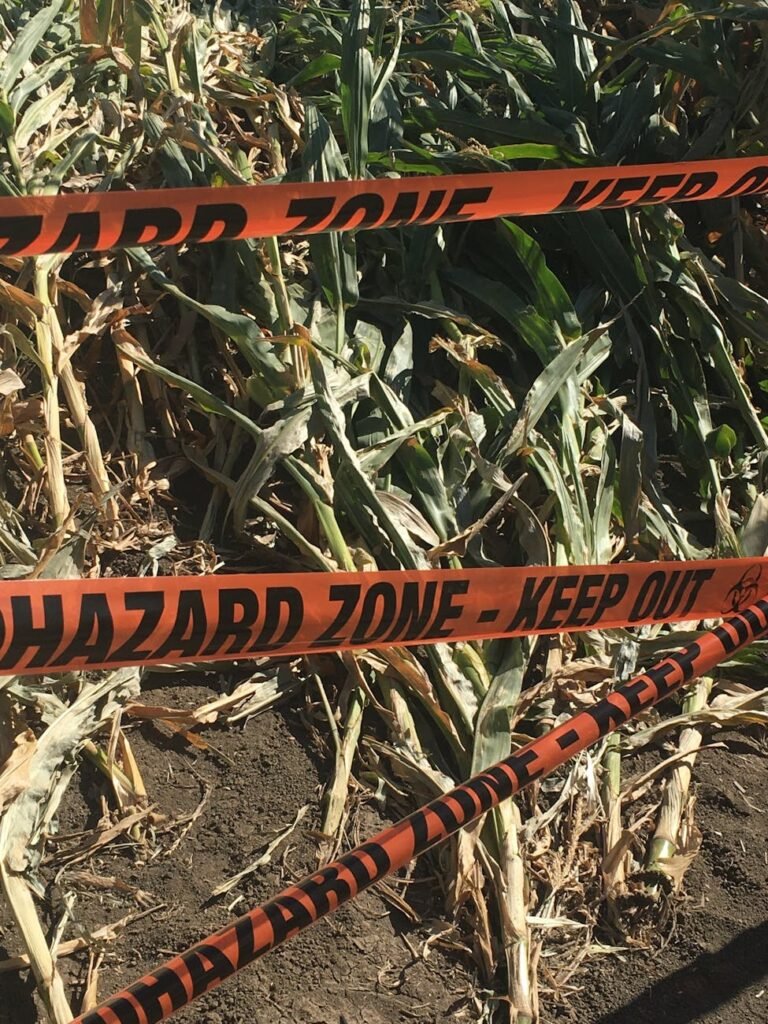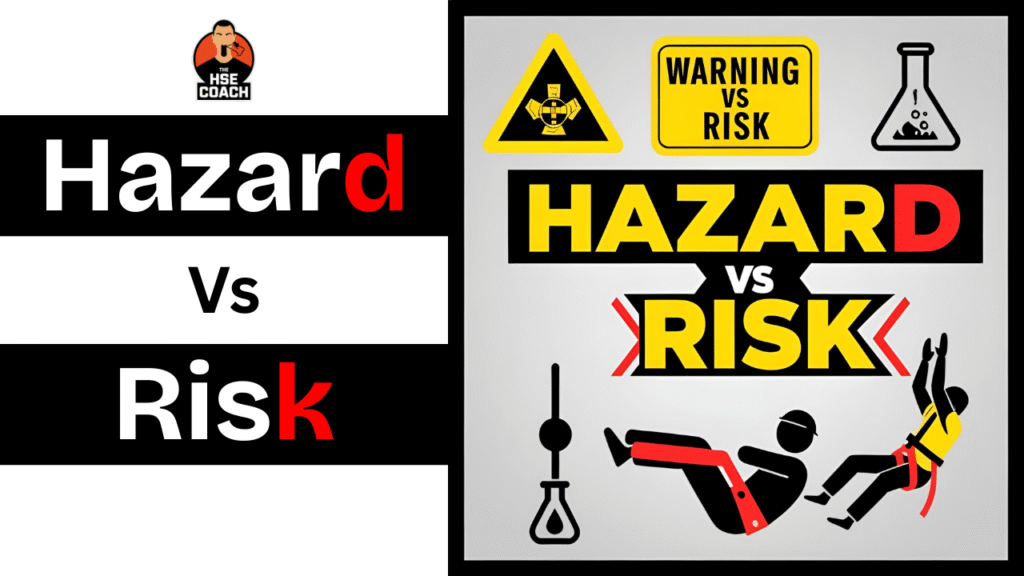
Hazard vs Risk
Introduction
In occupational health and safety, environmental science, and risk management, the terms “hazard” and “risk” are frequently used. While they are related, they have distinct meanings. Understanding the difference between them is crucial for effective safety management, regulatory compliance, and risk mitigation strategies.
This article provides a detailed comparison between hazards and risks, exploring their definitions, types, assessment methods, and real-world applications. By the end, readers will have a clear understanding of how hazards and risks differ and how they interact in various contexts.
1. Definition of Hazard
A hazard is any source, situation, or condition that has the potential to cause harm, injury, illness, or damage to property, the environment, or both. Hazards exist regardless of whether they lead to an actual incident; their mere presence means they could pose a threat under certain conditions.
Types of Hazards
Hazards can be categorized into different types based on their nature:
- Physical Hazards – These are environmental factors that can cause harm without direct contact.
- Examples: Noise, radiation, extreme temperatures, machinery.
- Chemical Hazards – Substances that can cause harm through exposure.
- Examples: Toxic gases, corrosive chemicals, flammable liquids.
- Biological Hazards – Living organisms or organic matter that can cause disease or infection.
- Examples: Bacteria, viruses, mold, insects.
- Ergonomic Hazards – Workplace conditions that strain the body.
- Examples: Poor posture, repetitive movements, improper workstation setup.
- Psychosocial Hazards – Factors affecting mental health and well-being.
- Examples: Workplace stress, harassment, excessive workload.
Examples of Hazards
- A sharp knife is a hazard because it can cause cuts.
- Asbestos is a hazard because prolonged exposure can lead to lung disease.
- Slippery floors are a hazard because they can cause falls.
2. Definition of Risk
Risk refers to the likelihood or probability that a hazard will cause harm, combined with the severity of the consequences. Unlike a hazard, which is a potential source of harm, risk considers both the chance of an incident occurring and its potential impact.
Components of Risk
Risk is determined by two key factors:
- Likelihood (Probability) – How likely is it that the hazard will cause harm?
- Severity (Consequence) – How severe would the harm be if it occurs?
Examples of Risks
- Using a sharp knife (hazard): The risk depends on how often it is used (likelihood) and how severe a potential cut could be (severity).
- Working at heights (hazard): The risk depends on safety measures (e.g., harness use) and the height (fall severity).
- Exposure to toxic chemicals (hazard): The risk depends on exposure duration and concentration.

3. Key Differences Between Hazard and Risk
| Aspect | Hazard | Risk |
|---|---|---|
| Definition | A potential source of harm. | The likelihood and severity of harm. |
| Nature | Inherent (always present). | Depends on exposure and controls. |
| Focus | What can cause harm? | How likely is harm, and how bad? |
| Example | Electricity is a hazard. | Risk of electric shock depends on safety measures. |
Illustrative Example:
- Hazard: A chemical like hydrochloric acid.
- Risk: The risk depends on handling procedures—if workers wear gloves and goggles, the risk is low; without protection, the risk is high.
4. Hazard Identification and Risk Assessment
To manage workplace or environmental safety, organizations conduct hazard identification and risk assessment.
Hazard Identification Methods
- Workplace Inspections – Regular checks to spot hazards.
- Job Safety Analysis (JSA) – Breaking down tasks to identify hazards.
- Employee Feedback – Workers report hazards they encounter.
- Historical Data – Review past incidents to identify recurring hazards.
Risk Assessment Techniques
- Qualitative Risk Assessment – Uses descriptive scales (e.g., Low/Medium/High).
- Quantitative Risk Assessment – Uses numerical probabilities (e.g., 1 in 10,000 chance).
- Semi-Quantitative – Combines both approaches.
Risk Matrix Example
| Likelihood \ Severity | Minor | Moderate | Major |
|---|---|---|---|
| Unlikely | Low | Low | Medium |
| Possible | Low | Medium | High |
| Likely | Medium | High | High |
5. Risk Management and Mitigation Strategies
Once hazards and risks are identified, organizations implement controls:
- Elimination – Remove the hazard entirely (e.g., replacing toxic chemicals).
- Substitution – Use a less hazardous alternative.
- Engineering Controls – Physical barriers or safety devices.
- Administrative Controls – Policies, training, and procedures.
- Personal Protective Equipment (PPE) – Last line of defense (e.g., gloves, helmets).
Hazard vs Risk: Industry-Specific Examples
1. Oil & Gas Industry
Hazards
- Flammable gases (e.g., methane, hydrogen sulfide) – Can cause explosions or poisoning.
- High-pressure pipelines – Potential for ruptures leading to leaks or explosions.
- Confined spaces (e.g., storage tanks) – Risk of suffocation or toxic exposure.
- Heavy machinery (e.g., drilling rigs) – Can cause crush injuries.
- Extreme temperatures – Heat stress or frostbite risks.
Risks
- Explosion risk due to ignition of flammable gases in a poorly ventilated area.
- Pipeline rupture risk from corrosion if maintenance is neglected.
- Asphyxiation risk when entering a confined space without proper ventilation checks.
- Crush injury risk when operating heavy machinery without proper training.
- Heatstroke risk for workers in high-temperature environments without hydration protocols.
2. Construction Industry
Hazards
- Working at heights (e.g., scaffolding, ladders) – Fall hazard.
- Moving vehicles (e.g., cranes, forklifts) – Striking or crushing workers.
- Electrical wiring – Electrocution hazard.
- Noise pollution – Hearing damage from prolonged exposure.
- Sharp objects (e.g., nails, metal sheets) – Puncture or laceration injuries.
Risks
- Fall risk from unsecured scaffolding due to lack of guardrails.
- Collision risk from reversing vehicles in a congested site.
- Electrocution risk when working near live wires without proper insulation.
- Hearing loss risk for workers not wearing ear protection in high-noise zones.
- Cut injury risk from handling sharp materials without gloves.
3. Manufacturing Industry
Hazards
- Rotating machinery (e.g., conveyor belts, presses) – Entanglement hazard.
- Toxic chemicals (e.g., solvents, acids) – Skin burns or respiratory issues.
- Forklifts & heavy loads – Crushing or impact injuries.
- Repetitive motions – Musculoskeletal disorders (e.g., carpal tunnel syndrome).
- Slip & trip hazards – Wet floors or cluttered walkways.
Risks
- Amputation risk from unguarded machinery during operation.
- Chemical burn risk due to improper handling of corrosive substances.
- Struck-by risk from falling loads if forklifts are overloaded.
- Repetitive strain injury risk for assembly line workers without ergonomic adjustments.
- Slip-and-fall risk due to oil spills not cleaned promptly.
Conclusion
While hazards are inherent dangers in a workplace, risks depend on exposure and control measures. Effective risk management involves:
- Identifying hazards
- Assessing risks (likelihood & severity)
- Implementing controls (elimination, substitution, PPE)
By distinguishing between hazards and risks, industries can prioritize safety measures more effectively.
HSE vs EHS vs SHE: Difference Between HSE, EHS, and SHE – A Detailed Comparison
Introduction of HSE (Health, Safety, and Environment)
Unsafe Act vs Unsafe Condition: Key Differences with Industry Examples
Near-Miss vs Accident vs Incident
FAQs
1. Can a hazard exist without risk?
Yes, if a hazard is properly controlled (e.g., flammable gas stored safely in a sealed container with no ignition sources).
2. How can risks be reduced in the workplace?
Through hierarchy of controls: Elimination, substitution, engineering controls, administrative controls, and PPE.
3. Why is risk assessment important?
It helps determine the severity and likelihood of harm, allowing for better safety planning.
4. What’s the difference between a hazard and a near miss?
A hazard is a potential source of harm, while a near miss is an unplanned event that could have caused harm but didn’t.
5. Who is responsible for hazard identification?
Employers, safety officers, and workers all share responsibility in identifying and reporting hazards.
By understanding hazards and risks, industries can create safer workplaces and prevent accidents.























